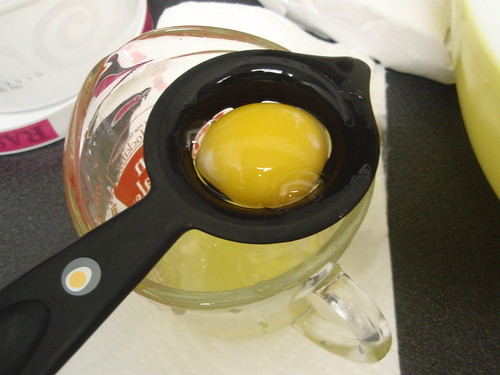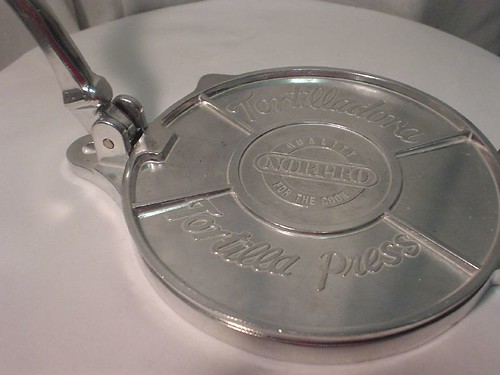Introduction
In every kitchen there are at least eight devices, tools, or gadgets that are downright useless. They are used maybe once, then disappear into the darkness of a cupboard or drawer. One day they are again drawn out and the owner is perplexed, wondering why they were purchased in the first place.
These are the egg separators, the mushroom brushes, the garlic presses of the kitchen, and unless the kitchen owner is an extremely active chef, the tools probably need to go. So, what are some of these gadgets and how can they be identified, preferably before you spend your hard cash on them?
The Vegetable Brush
Vegetable brushes are usually made of hard plastic with bristles that resemble that of a soft toothbrush. The idea behind a vegetable brush is that it should scrub away any leftover dirt or pesticides that the farmer or greengrocers failed to remove. Really, a quick rinse under the tap is all it takes to get rid of any residual dirt or insecticide. However, for those who are terribly finicky about how clean their vegetables are, a cheap toothbrush will do the trick just as well.
The Garlic Peeler
A garlic peeler is a soft plastic tube, usually resembling an inside-out piece of manicotti. All a cook has to do is insert the garlic, press down, and roll it about. But rather than spend anywhere from two to ten pounds on such a device, most cooks will use the flat side of a large knife to smash a clove just enough to pull the paper away. If that fails, five seconds in a microwave will make the clove pop right out.
The Egg Separator
These devices resemble small plastic measuring cups that have the sides cut out of the bottoms. An egg is cracked and tipped into it and the yolk remains in the small amount of cup at the bottom. In the days before such a device, most people just tipped the eggs into a clean hand and let the whites slip between their fingers. Some seasoned chefs even used the shells themselves to separate the yolk from the white. Either method is simple, effective, and saves a bit of drawer space as well as a few coins. There is also one less tool to clean later.
The Herb Mincer
Herb mincers are fantastic for chefs who do not know how to use knives. In short, they are about as useful as a screen door on a submarine. They come in various forms, some resembling guillotines, some that look like miniature scythes, and they all basically just slice things. All are rather expensive considering they do the same job as a good kitchen blade and take up three times the space.
The Quesadilla/Tortilla Press
Unless a family or chef is constantly preparing Mexican cuisine, quesadilla and tortilla presses are rubbish. These gadgets are usually made of heavy metal, have flat hinged tops, and plug into the wall. Authentic tortillas are actually cooked on hot flat stones rather than electronic devices sold at Tesco. If a hot stone cannot be found, a very hot skillet can be used in its stead. The kitchen owner can save thirty to a hundred pounds, and still have more room to prepare quesadillas.
The Rice Cooker
Again, unless a family or chef is constantly preparing rice dishes, a rice cooker is not a particularly useful item. These generally resemble slow cookers like crock pots and cost nearly twice as much sometimes. One model, however, is made from hard plastic, and works in a microwave. None of these devices save any time and just take up precious space in the kitchen. It is better to stick to the tried and true method of cooking rice in a regular pot with a lid.
The Salad Spinner
A hard plastic sieve sits inside a plastic bowl. Lettuce and other salad ingredients go inside. The top goes on and the cook either turns a crank or presses down on a handle to spin the vegetables, thus using centrifugal motion to remove excess water. Meanwhile, another cook is merely shaking off excess water from some washed vegetables and blotting them dry with clean paper napkins. Once again, this method is very effective and there is less to wash up later.
The Dull Knives
A dull knife is not only useless, but dangerous. The more pressure and sawing that a cook has to use when handling a knife, the more likely that cook is going to lose a finger in the process. Knives should be kept as sharp as possible and out of drawers, far from the tiny hands of curious children. Knife blocks or magnetic strips fastened to a wall are the best place for cooking blades. They will stay sharper for much longer, and will also prevent accidental cuts when a cook is rummaging through a drawer, searching for an elusive egg separator that should have been tossed out years ago. A dull, rusty, or severely damaged knife should either be repaired, re-sharpened, or recycled.
Conclusion
There are many more devices that fall under the “Useless Kitchen Tool†category, and many need to be removed from residential kitchens. It can be difficult to part with some items, especially if a cook does indeed use them once or twice a year. However, in the long run, throwing out useless kitchen gadgets can be very beneficial. There is suddenly much more room in the cupboards and drawers. It becomes easier to find the useful items, such as measuring cups and cutting boards. In short, the kitchen owner finds peace and serenity in what was once chaos.
Attached Images:
-  License: Creative Commons image source
-  License: Creative Commons image source
-  License: Creative Commons image source
Guest Post by Kitstone – Painted Wood Furniture




 it, and we cook with it. Water is essential, and it is a precious resource without which there literally would be no life on Earth. It is no wonder that it touches us on such an elemental level. What better way to enjoy such a fundamental part of life than to have a fountain as a part of your home? Inside or out a water fountain can complement even the smallest space.
it, and we cook with it. Water is essential, and it is a precious resource without which there literally would be no life on Earth. It is no wonder that it touches us on such an elemental level. What better way to enjoy such a fundamental part of life than to have a fountain as a part of your home? Inside or out a water fountain can complement even the smallest space. Really ladies; how many ties, belts, pairs of slippers, and PJs does a man need? Between Christmas, birthdays, Father’s Day, and anniversaries, he could probably open his own shop! When your shopping list is long, and time to shop is short, grabbing that pair of slippers and a tie on the way to the register is almost all you can muster. I get it!
Really ladies; how many ties, belts, pairs of slippers, and PJs does a man need? Between Christmas, birthdays, Father’s Day, and anniversaries, he could probably open his own shop! When your shopping list is long, and time to shop is short, grabbing that pair of slippers and a tie on the way to the register is almost all you can muster. I get it!